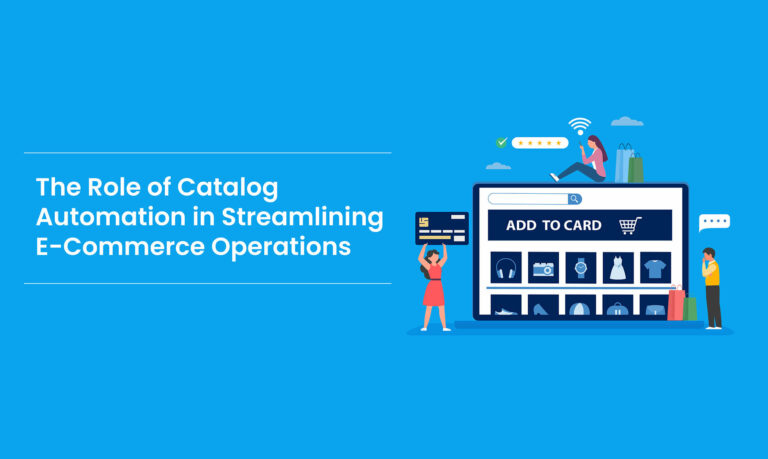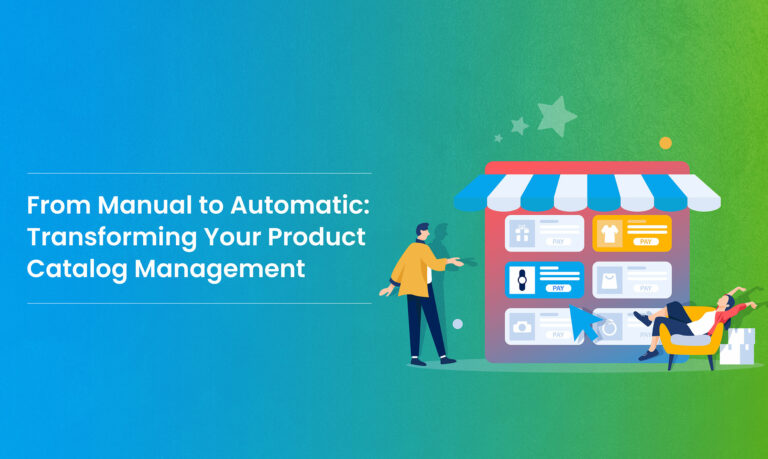Introduction
Advancements in the AI sector are not hidden from anyone unless you are hiding underground. You would have seen how AI or artificial intelligence has changed. Especially in 2024, AI has embedded itself into all aspects of your life, from home appliances to securities systems. AI has captured everything and everywhere. However, when it comes to e-commerce, AI or artificial intelligence is staying out to revolutionize their business operation.
Artificial intelligence is not one of your concepts. Still, it has developed itself from a fascinating subject in science fiction movies to helping real companies save huge amounts of money and time. Hence, the benefits of AI in the e-commerce sector are making their way to the business operation for a much simpler offline brick-and-mortar to the fast-growing e-commerce industry to go global. In this article, you will get to know the pros and cons of AI in the e-commerce industry, along with the challenges of adopting AI in the industry.
Pros of AI Content
1. Personalization
Today, every individual expects personalized experiences whenever they shop, no matter where they are. According to Salesforce, about two-thirds of customers want businesses to understand their unique needs and preferences for shopping. It’s practically impossible to cater to each individual manually. But now, thanks to automated content generation in e-commerce, things are changing. AI can analyze how customers behave on a website and the info they share to learn about them. Using complex math and historical data, AI can figure out what customers like and suggest products they’re likely to buy. This can boost sales and keep customers engaged on the site for longer.
AI technology can learn about an individual by watching what they do on your site and listening to what they tell you. Then, it uses that info to suggest products that they’re more likely to want. Brands use stuff like quizzes to find out about people’s style, tracking pixels to see what they’re looking at, and detailed data on what pages they’ve seen and what they’ve done. This helps them suggest the right products to each person, which can boost sales and make customers feel like they get them.
2. Enhanced User Experience
If you look at the traditional business model, brick and mortar is what you will see. The customers enter the store and get squared by a sales associate who can guide them and answer their questions about a product they might be interested in. Hence, shifting it towards online was a difficult concept because most customers prefer a human touch. They want someone who knows about the business products and can guide them with relevant products while answering and helping the shoppers with what they are looking for. AI chatbots and sales executives are helping businesses demolish the gap between the human touch shopping experience and the e-commerce world. Hence, they can help you right away with any questions you have about products, shipping, or your orders. Moreover, they’re great at suggesting products you might like and guiding you to find the info you need to make a decision.
3. Data Analysis
By exploring customer data and behavior in real time, artificial intelligence tools can help your e-commerce business to predict the future. And even if you have a pool of products, these AI tools can help you optimize the individual prices of your products automatically as per the customer demand. Moreover, these AI tools can also even adjust prices by accounting for data like the weather, the season, the time of the day, and whether it’s week or weekend. This thing is called dynamic pricing. Dynamic pricing is now more possible and essential than ever because of the advancements in AI in e-commerce. Hence, these smart AI tools are being extensively used by hotels, airlines, booking portals, and other industries, which helps businesses increase their business and profits with dynamic pricing.
Cons of AI Content
1. Lack of Human Touch
One of the main concerns of using AI content in the e-commerce industry would be the lack of creativity and human touch. While AI-generated content based on algorithms, insights, and data is unable to understand human emotion, it is way out of hand for AI. Hence, AI lacks the creativity of human emotion and language. Therefore, AI content is less impactful and engaging in comparison to the content created by human writers. AI isn’t wise, and stuff made entirely by AI won’t have that spark of context or originality. Sure, AI-generated content is quick and cheap, but it’s quite bland on its own. However, when humans step in, we can add that extra layer of insight, going beyond just spitting out facts. We can turn it into real thought leadership, you know? So, businesses should see AI as a tool to beef up content creation, not as a replacement for genuine wisdom.
2. Over Reliance on Algorithms
Using AI tools can help companies with a ton of content needs, but there are downsides, too. One biggie is that these tools can’t nail down a unique voice and vibe, which is super important for showing off your brand. Plus, they sometimes don’t know what’s legit and what’s not, so you have to double-check their work when it comes to research stuff. However, if the e-commerce business relies overly on AI content, then the business cannot execute its operations properly.
3. Privacy Concerns
One of the most potential challenges that one can face in the e-commerce industry while implementing AI content is the concern of accuracy and data privacy. AI needs to access large amounts of data to learn and generate content. Technically, it just can be a concern of security and privacy in the industry with sensitive information. Additionally, the accuracy of AI-generated content has impacted the data quality and algorithm used in The E-Commerce industry. One cannot depend on AI-generated content without any human being involved.
Challenges faced by companies in adopting AI content
In many workplaces, there’s a challenge with AI adoption because folks need help navigating its complexities. One way to tackle this is by investing in training so everyone gets a better handle on it. This not only helps speed up the integration of AI but also sparks fresh ideas and innovation.
Another hurdle is the worry that AI might replace jobs or create resistance among employees. To deal with this, leaders need to emphasize teamwork and communication. They should show how AI can enhance what humans do rather than replace them. This makes everyone feel more involved and less anxious about the changes.
Sometimes, it’s just overwhelming to keep up with all the new technology and figure out what to do to keep up with the pace. People might hesitate to embrace automation because it feels like they’re losing control or the personal touch. So, it’s important to take things one step at a time, ensuring everyone feels comfortable and understands the benefits of using AI tools.
In adopting AI technologies, leaders often face challenges due to reliance on third-party integrations like OpenAI. This reliance can bring risks, such as technical glitches and limitations, with updates beyond their control. To tackle this, leaders must encourage diversity in their AI strategies. By ensuring their applications can adapt across various platforms as new AI technologies emerge, they can mitigate these risks.
AI holds great potential for enhancing customer service. Chatbots, trained by AI, can now handle up to 80% of support inquiries, leading to reduced operational costs. While companies may develop their own AI tools, like content moderation systems, there needs to be more certainty about AI’s capacity for empathy, which is crucial in customer service interactions. More testing and data analysis are necessary to assess interaction quality and prevent customer loss.
Though AI promises productivity gains, it’s not without risks. Flawed datasets often yield flawed results, potentially harming organizations and customers alike. Leaders must understand the deployed technology, its intended business applications, the datasets utilized, and associated risks to make informed decisions.
Conclusion
AI technology presents both opportunities and challenges for e-commerce businesses. The pros include personalized experiences, enhanced user engagement, and data-driven decision-making. However, cons such as the lack of human touch, overreliance on algorithms, and privacy concerns underscore the need for careful integration and oversight. Despite these challenges, companies can navigate Rubick’s AI adoption by investing in training, emphasizing teamwork, and taking a gradual approach to implementation. By understanding the risks and benefits of AI content, businesses can harness its potential to drive innovation and improve customer experiences in the ever-evolving e-commerce landscape.

